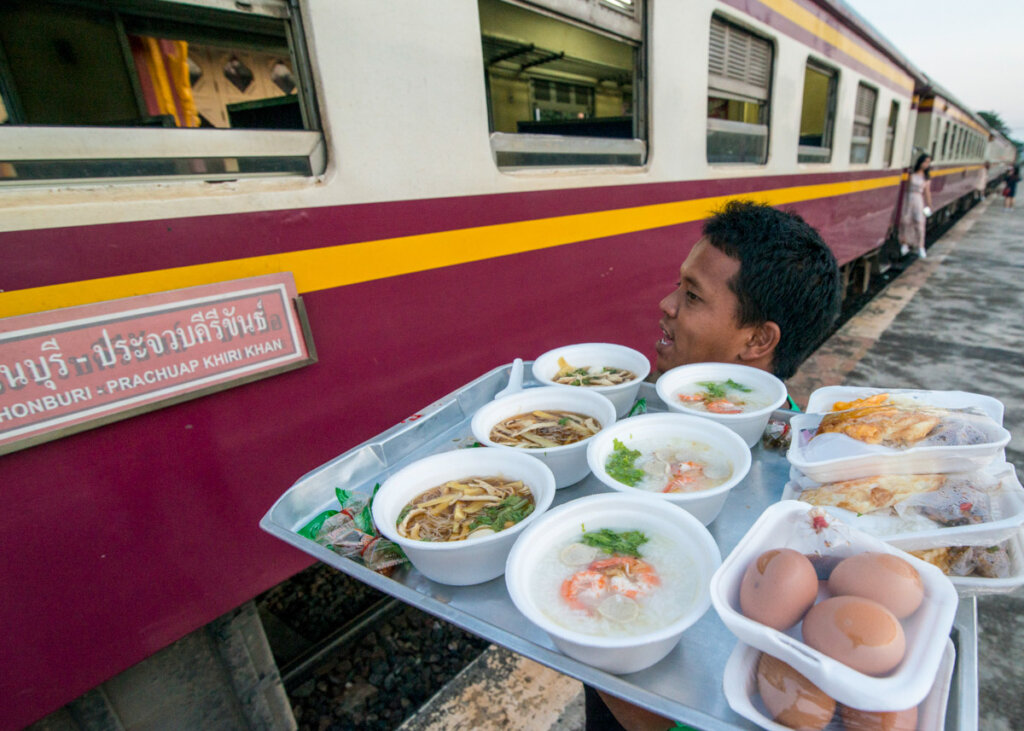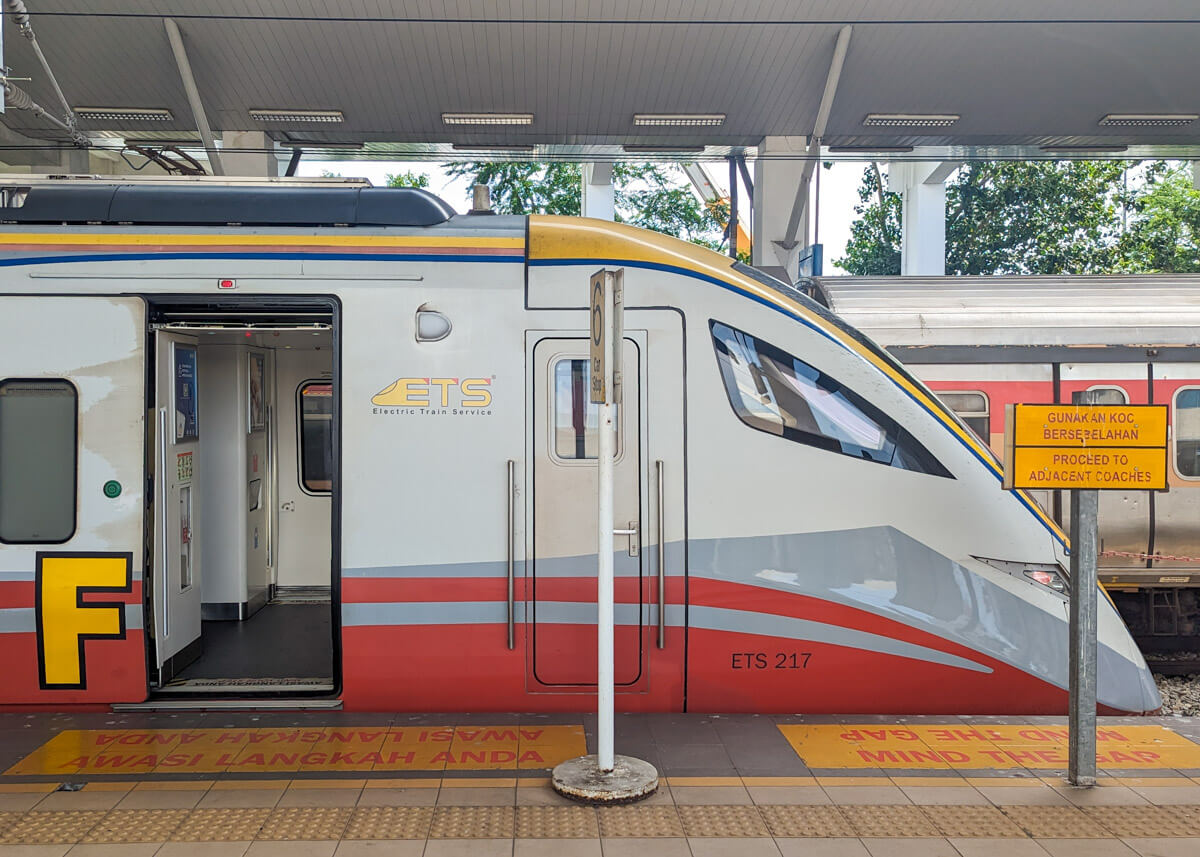With other modes of transport available, some quicker and some cheaper, you might be wondering if you should travel by train? Despite these other options available, travelling by train continues to enjoy a resurgence, with more and more travellers slowing down and enjoying the journey.
In a world where everyone and everything seems to be in a hurry, there’s still something comforting and nostalgic about taking the train and savouring the journey. Southeast Asia is well-served with long distance sleeper services, as well as plenty of modern, fast routes linking major cities and tourist destinations. Make sure you check out our selections for the top five train trips in Southeast Asia for further inspiration.
Although the region does now have a high-speed railway line in Indonesia, the rest of the network relies on slightly older infrastructure, so while there’s no doubt a train journey is more romantic, there are faster and more (sometimes) reliable modes on transport available. So why travel by train? Well, we love train travel and know from years of experience that there are plenty of reasons why you should forget about planes, cars or buses, and jump onboard the most memorable and enjoyable form of travel.
And once you’ve made the decision to ride the rails across Southeast Asia, check out our top tips and destination guides to start planning your adventures.
Better for the environment
The exact figures vary depending on train type, but there’s no doubting the evidence that taking the train is far better for the environment than road transport and (particularly) flying. Jumping onboard a train to replace a short-haul flight reduces your emissions by around 90% and there are similar savings to be had when taking into account long-haul flights.
Train travel also comes out well when compared to bus travel, vastly reducing emissions and helping to reduce some of the congestion on the roads, especially in the larger towns and cities. Many websites now exist that allow you to compare a journey and see how much you’re managing to reduce your carbon footprint. Check them out and give yourself yet another reason to take the train.
Often cheaper
Rock-bottom air fares might initially appear cheaper than a train fare, but once you’ve factored in additional costs, the train journey can often work out cheaper:
- Taxi fares to and from a remote airport, nowhere near the city centre
- Luggage allowance on budget airlines is usually only a small carry-on bag, with large fees to check in suitcases or backpacks
- Seat selection is nearly always free on trains but expensive with an airline.
Many travellers enjoy the apparent freedom of hiring a car, but this can work out much more expensive than a set of train tickets, especially when you factor in additional driver fees, excess insurance and fuel prices. Even if you let someone else do the driving, bus tickets are a similar price to train fares, but (in our opinion) offer only a fraction of the experience and enjoyment of a train ride.
If you’re lucky enough to be in a Southeast Asian country that offers an overnight sleeper train (e.g. Thailand or Vietnam), don’t forget that your ticket price includes your accommodation costs for that night, saving you a hotel bill. While the initial cost of a sleeper berth can seem expensive, once you factor in this saving, it soon becomes quite the bargain.
See the world up-close
When it comes to getting from A to B in the fastest time, flying usually wins first prize. But, are you really experiencing the journey 35,000ft in the air. A quick glance out of the window during take-off and landing before the clouds block the view is about the only time you see anything other than the inside of a cabin for hours on end.
A train ride is a whole different experience. Few travellers forget the arrival into Hanoi’s main station, passing inches away from buildings and snaking their way through the inner city. Or the departure from Phnom Penh, when the train’s horn sounds for fifteen constant minutes to alert the residents of its passing, and passengers hang out of the open windows to get an up-close view of the city going about its daily routine.
One of the great joys of train travel is getting this ground-level view of the world, a chance to really get to know a country and to turn the journey into an essential part of your trip, rather than just something to be endured and rushed through.
Buses and cars at least keep you on ground level, but you’re not separate like you are on a train, having to fight for space with other road users, stopping at traffic lights and traffic jams, stop-start all the way to the bus depot. Trains glide around the country on their own timetable, occasionally waiting for another train to pass, or a cow to clear the line, but somehow always slightly above the chaos of daily life.

Spread out and catch up on life
While many train carriages in Southeast Asia might comprise efficient but uninspiring seating layouts, the sleeper carriages really do offer a fantastic level of space and comfort. In places such as Vietnam, the sleeper berths are in compartments of two or four beds, ideal for a family or group of friends. In Thailand there is more of an open-plan layout but you still have plenty of your own space to spread out and get comfortable.
On an aeroplane, this much space would only be available in First or Business Class, but on a sleeper train, it comes as standard. If you need to catch up on some work, set the laptop up on the table, attach the power cable and get busy. When it’s time for bed, there’s no need to spend hours trying to get comfortable in a cramped aeroplane Economy class or a narrow bus seat, instead stretch out onto a six foot long bed and let the train rock you to sleep.
Sleeper trains
We’ve mentioned sleeper trains a few times already but they really do deserve their own category. What might be an arduous bus journey or inconvenient flight instead becomes a memorable overnight sleeper ride. Make your way to the city centre station, bring all the baggage you need onboard, find your berth, head to the restaurant car for dinner and then retire to your comfy bed for the evening.
The twenty hours and hundreds of kilometres pass by in the blink of an eye on a sleeper train and they’re usually scheduled to run overnight to make the journey even more efficient. Sleeper trains are also great sociable places to meet fellow travellers, everyone just seems more relaxed and friendly on a sleeper train; entirely the opposite to an airport where everyone is in full-on travelling mode.

Larger luggage allowance
Most train companies in Southeast Asia have a token 20kg limit on luggage buried in the T&Cs but it’s never enforced unless you try bringing the proverbial kitchen sink. Large backpacks (or suitcases, if you must) can be brought onboard and stowed in the luggage racks or under the seats. If you have something even more cumbersome, most train guards will happily find your bag a spot in the luggage compartment.
Also, feel free to bring on as many liquids and pairs of scissors as you need. Although the bags are scanned, there’s no restrictions on how many bottles of water you can bring with you. It all feels so much more civilised than flying.

Better onward connections
Although some newer railway stations (e.g. Krung Thep Aphiwat Central in Bangkok) are built further away from the city centre, most railway stations are right in the heart of the town or city centre, ideal for onward connections. KL Sentral for example is ideally situated and easy to reach, unlike Kuala Lumpur International Airport, which is a one-hour (at best) taxi ride away from the centre.
It’s also common for public transport infrastructure to be located nearby the railway stations, allowing you to jump onto the metro, bus or tram and continue your journey. Admittedly, bus stations are often just as well-served but can be trapped behind a wall of traffic congestion, adding hours to your journey.
When you approach Hanoi on the train and glide through the city centre, you’ll be glad you took the train and avoided the huge traffic jams that the buses must navigate. And in places like Saigon, buses aren’t even allowed into the city during the day, forcing you to take a shuttle bus to complete the journey. By contrast, Saigon railway station is right in the middle of the city, only a short distance from the Old Town.

Final thoughts on taking the train
For many people, the environmental factors on their own are enough to only ever take the train, and it’s true that the greatly reduced emissions are a massive reason to avoid flights and polluting buses. But in addition to this, trains are a much more enjoyable, convenient and flexible form of travel, often dropping you from city centre to city centre with (almost) unlimited baggage allowance and no time spent unpacking your electronics and squeezing all liquids into tiny plastic bottle.
With value for money and comfortable seats or berths waiting onboard, a train ride is nearly always the best option and guaranteed to leave you, your wallet, and the planet, in a much better place.

